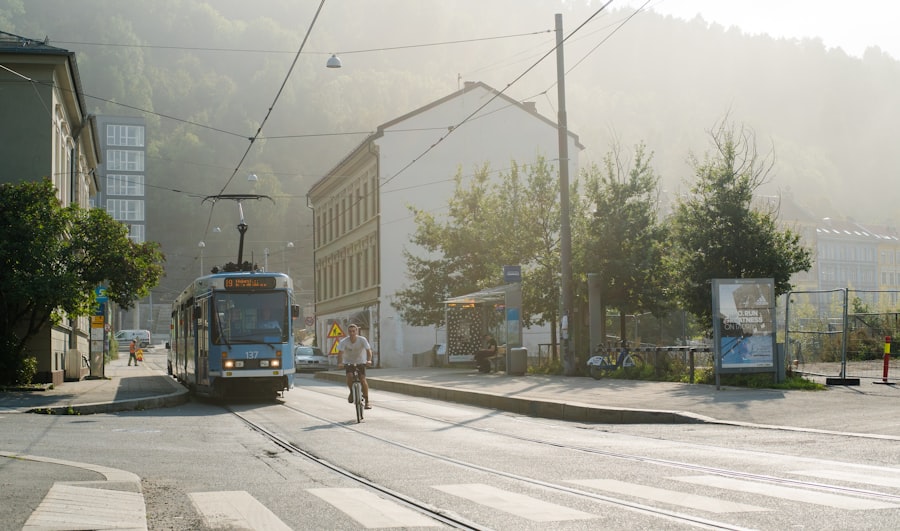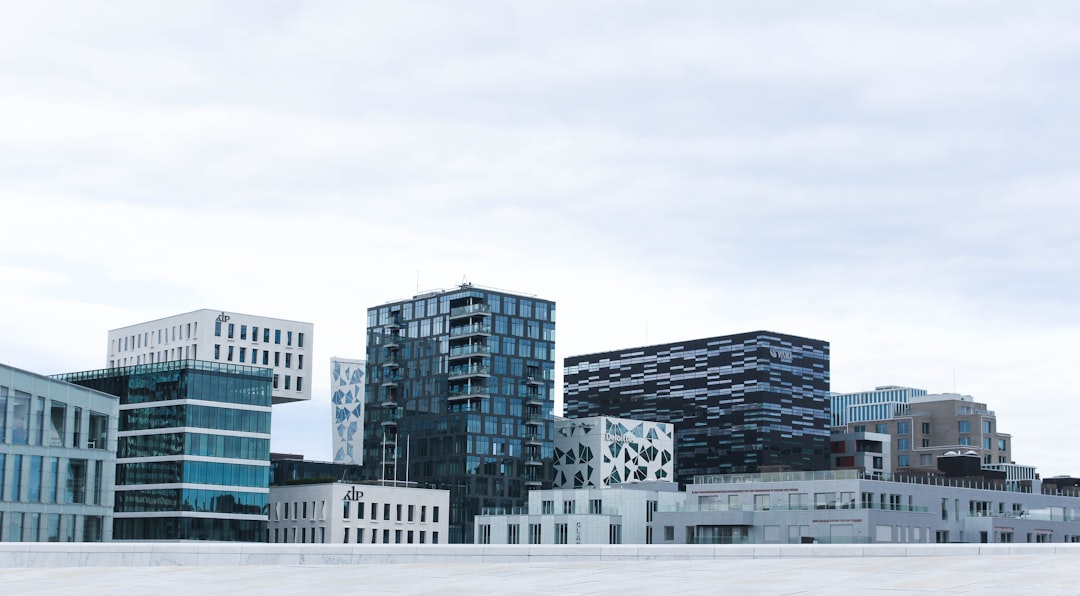Matpakke, a quintessential element of Norwegian culture, is more than just a packed lunch; it embodies the spirit of practicality and simplicity that characterises the Norwegian way of life. Traditionally consisting of an array of open-faced sandwiches, often adorned with a variety of toppings such as cheese, cold cuts, or vegetables, matpakke is a staple for many Norwegians, whether they are heading to work, school, or embarking on outdoor adventures. The concept of matpakke transcends mere sustenance; it reflects a deep-rooted cultural ethos that values frugality, health, and a connection to nature.
In a world increasingly dominated by fast food and convenience meals, matpakke stands as a testament to the Norwegian commitment to wholesome eating. It is not just about the food itself but also about the ritual of preparation and consumption. The act of making matpakke can be seen as an expression of care, where individuals take the time to curate their meals thoughtfully.
This article will delve into the rich history, societal significance, and cultural implications of matpakke, exploring how this simple meal has woven itself into the fabric of Norwegian life. Schedule a one-on-one consultation with our relocation specialists to simplify your move to Norway. https://norwayrelocation.no/one-hour-strategy-session/
Summary
- Matpakke is a traditional Norwegian packed lunch consisting of open-faced sandwiches, usually with cheese, meat, or fish, and often accompanied by fruits or vegetables.
- Matpakke has been a staple in Norwegian society for over a century, with its origins dating back to the early 1900s when it became popular among workers and school children.
- Matpakke is deeply ingrained in Norwegian culture, reflecting the values of simplicity, practicality, and frugality.
- In Norwegian cuisine, matpakke plays a significant role as a convenient and cost-effective meal option for people of all ages.
- Matpakke symbolizes frugality and sustainability, as it encourages the use of leftovers and reduces food waste, aligning with Norway’s environmentally conscious ethos.
The History of Matpakke
The origins of matpakke can be traced back to the early 20th century when Norway was undergoing significant social and economic changes. As urbanisation increased and more people began working outside the home, the need for portable meals became apparent. The matpakke emerged as a practical solution for workers who required sustenance during long hours away from home.
It was a time when frugality was essential, and families sought ways to provide nutritious meals without incurring excessive costs. Historically, matpakke was often made from leftover food, showcasing the resourcefulness of Norwegian households. This practice not only minimised waste but also ensured that families could enjoy a variety of flavours throughout the week.
As time progressed, matpakke evolved to include a wider range of ingredients and became more diverse in its offerings. Today, while traditional elements remain, modern interpretations have emerged, reflecting global influences and dietary preferences.
Matpakke in Norwegian Society

In contemporary Norwegian society, matpakke is more than just a meal; it is a cultural icon that signifies community and connection. It is common to see children carrying their colourful lunch boxes to school, filled with lovingly prepared sandwiches and snacks. This daily ritual fosters a sense of belonging among students as they share their meals and experiences with one another.
The act of exchanging matpakke ideas and recipes has become a bonding experience for families and friends alike. Moreover, matpakke plays a crucial role in promoting healthy eating habits among Norwegians. With an increasing awareness of nutrition and wellness, many individuals are opting for homemade lunches over processed alternatives.
This shift not only supports personal health but also encourages families to engage in meal preparation together, reinforcing familial ties and instilling lifelong habits in children. In this way, matpakke serves as a bridge between generations, passing down culinary traditions while adapting to modern dietary needs.
The Role of Matpakke in Norwegian Cuisine
Matpakke occupies a unique position within the broader context of Norwegian cuisine. It showcases the country’s rich culinary heritage while allowing for creativity and personal expression. Traditional toppings such as brunost (brown cheese), smoked salmon, and pickled herring reflect Norway’s coastal geography and agricultural practices.
These ingredients are not only delicious but also highlight the importance of local sourcing and seasonal eating. In recent years, there has been a resurgence of interest in traditional Norwegian foods, with matpakke at the forefront of this movement. Chefs and home cooks alike are experimenting with new flavours and combinations while honouring classic recipes.
This evolution has led to an exciting fusion of traditional and contemporary elements within matpakke, making it an ever-evolving aspect of Norwegian cuisine that continues to delight both locals and visitors.
Matpakke as a Symbol of Frugality
Frugality is deeply ingrained in Norwegian culture, and matpakke epitomises this value. In a country where the cost of living can be high, preparing one’s meals is seen as both a practical necessity and a moral choice. The ability to create nutritious lunches from simple ingredients reflects an understanding of resource management that is celebrated in Norwegian society.
This ethos extends beyond individual households; it is a collective mindset that encourages sustainability and mindful consumption. The symbolism of matpakke as a frugal meal resonates particularly well in today’s context of environmental awareness. As more people seek to reduce their carbon footprint and minimise waste, matpakke serves as an ideal solution.
By preparing meals at home using locally sourced ingredients, individuals can contribute to a more sustainable food system while enjoying the benefits of homemade cuisine. In this way, matpakke not only represents frugality but also embodies a commitment to environmental stewardship.
Matpakke and the Environment

The environmental implications of matpakke are significant in an era where sustainability is paramount. By opting for homemade lunches over pre-packaged meals, Norwegians are actively reducing plastic waste and minimising their reliance on industrial food production. The emphasis on using fresh, local ingredients further supports sustainable agricultural practices and reduces transportation emissions associated with food distribution.
Additionally, matpakke encourages mindful eating habits that align with environmental consciousness. Many Norwegians are now incorporating seasonal produce into their lunches, which not only enhances flavour but also supports local farmers and reduces the carbon footprint associated with imported goods. This connection between matpakke and environmental responsibility highlights how cultural practices can evolve to meet contemporary challenges while remaining rooted in tradition.
Matpakke and Workplace Culture
In the workplace, matpakke has become synonymous with productivity and well-being. Many companies in Norway encourage employees to bring their own lunches as part of a broader initiative to promote healthy eating habits and work-life balance. The act of taking a break to enjoy a homemade meal fosters camaraderie among colleagues as they gather to share their culinary creations and exchange ideas.
Moreover, matpakke serves as an antidote to the fast-paced nature of modern work life. In contrast to the convenience of takeaway options, preparing one’s lunch allows individuals to slow down and savour their meals mindfully. This practice not only enhances overall job satisfaction but also contributes to improved mental health by providing employees with moments of respite during their busy days.
Matpakke in Education
In educational settings, matpakke plays an integral role in shaping children’s attitudes towards food and nutrition. Schools across Norway often incorporate discussions about healthy eating into their curricula, emphasising the importance of balanced meals like matpakke. By encouraging students to bring their own lunches from home, educators instil values of responsibility and self-sufficiency from an early age.
Furthermore, sharing matpakke among peers fosters social skills and promotes inclusivity within the classroom environment. Children learn to appreciate diverse culinary traditions as they exchange ideas about their favourite toppings or share recipes with one another. This communal aspect of matpakke not only enriches their educational experience but also cultivates friendships that extend beyond the schoolyard.
Matpakke in Family and Social Gatherings
Matpakke transcends individual consumption; it is often featured prominently in family outings and social gatherings across Norway. Whether it’s a picnic in the park or a day spent hiking in the mountains, families pack their favourite sandwiches and snacks to enjoy together amidst nature’s beauty. This practice reinforces familial bonds while celebrating the joys of shared experiences.
In social settings, matpakke serves as a conversation starter as friends gather around tables laden with various homemade delights. The act of sharing meals fosters connections among individuals from different backgrounds while highlighting the diversity within Norwegian cuisine. As people come together over matpakke, they create lasting memories that strengthen their relationships and celebrate the essence of community.
Matpakke in Popular Culture
Matpakke has made its mark on popular culture in Norway, appearing in literature, television shows, and even social media platforms. It has become a symbol of national identity that resonates with both young and old alike. Many Norwegians take pride in showcasing their unique interpretations of matpakke on social media, sharing photos that highlight creativity and personal flair.
Moreover, culinary influencers have embraced matpakke as part of their content creation, offering innovative recipes that cater to various dietary preferences while staying true to traditional roots. This trend has sparked renewed interest in homemade lunches among younger generations who seek inspiration for their own culinary adventures.
The Future of Matpakke
As we look towards the future, matpakke is poised to continue evolving while remaining firmly rooted in its cultural significance. With increasing awareness around health and sustainability, more individuals are likely to embrace homemade lunches as part of their daily routines. The rise of plant-based diets and alternative ingredients will further diversify the offerings within matpakke, allowing for greater creativity in meal preparation.
Additionally, initiatives aimed at promoting local food systems will likely enhance the appeal of matpakke as consumers seek out fresh produce from nearby farms. As Norway continues to navigate challenges related to climate change and food security, matpakke will serve as both a practical solution and a cultural touchstone that reflects the values of frugality, community, and environmental stewardship. In conclusion, matpakke is not merely a meal; it is an embodiment of Norwegian culture that encapsulates history, societal values, culinary traditions, and environmental consciousness.
As Norwegians continue to embrace this beloved practice while adapting it for modern times, matpakke will undoubtedly remain an enduring symbol of identity and connection for generations to come. For those considering relocating to Norway or immersing themselves in its rich culture, the Norway Relocation Group can provide invaluable assistance throughout your journey. From navigating housing options to understanding local customs, they offer tailored support that ensures a smooth transition into your new life in Norway.
As you settle into your new surroundings, consider enrolling in Norwegian courses at the NLS Norwegian Language School in Oslo. These courses will not only enhance your language skills but also deepen your understanding of cultural nuances such as matpakke—an essential aspect of daily life in Norway—allowing you to fully embrace your new home with confidence and ease.
Register for a Norwegian class at the NLS Norwegian Language School now!

